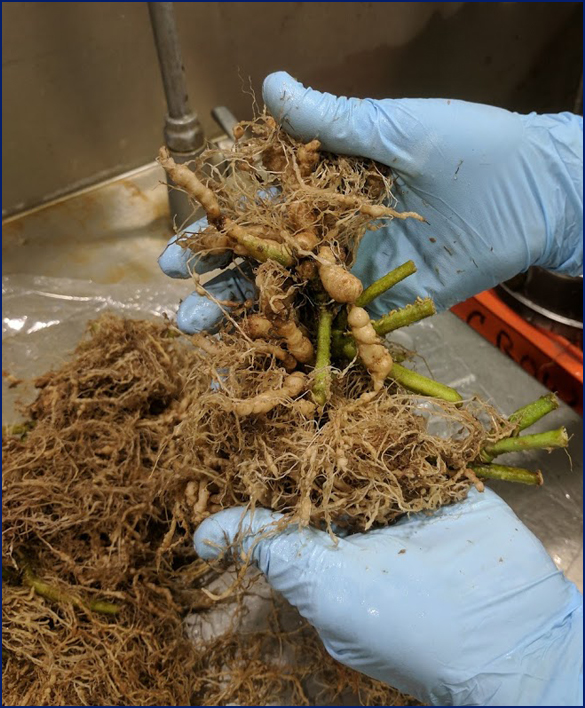Collecting nematode samples from commercially grown vegetables

When to sample: nematode symptoms can include stunted plants, yellowing of the leaves, and wilting, especially on a hot, dry day; nematode-infected areas tend to have a patchy distribution in the field.
Tools for sampling: spade, hand trowel, or soil auger; plastic bag, marker, tag.
Number of samples: each sample should consist of several sub-samples; collect enough samples to represent the situation in the field; the greater the number of sub-samples / cores for each sample, the more accurate the assessment will be; collect at least 10 sub-samples per acre, and combine these into one composite sample.
Sampling pattern: nematodes are rarely distributed evenly in a field, so it’s important to collect from several areas within a field; if a crop is in the field and symptoms are obvious, collect separate samples from areas of poor and good growth; sampling patterns can be random or systematic; the latter can be done in a zig-zag or a row pattern, and is more recommended for larger fields.
Time of sampling: this will obviously have a large impact on the type and number of nematodes that are found; plant-parasitic nematode typically increase to their highest levels during the growing season and reduce during the off season.
For diagnostic purposes, samples should be collected in the middle of the season and/or at final harvest.
For predictive sampling, samples are often taken early in the season, at or before planting, but this when plant-parasitic numbers are typically very low; better predictive assessments can probably be made from end-of-season samples from the previous crop.
Perennials can be sampled during the active growing period (rainy/growing season).
Other considerations: avoid sampling very wet or very dry soil; whenever possible also collect root samples (after final harvest) from the same locations as for soil, and roots in the same sample bag to help preserve the roots; avoid sampling dead plants, as nematodes will have moved away from these; use a spade or trowel to help lift/dig up the plants; do not just pull the roots, as they may break off easily when plants are heavily infected.
Aboveground plant tissue: some nematodes, such as foliar nematodes, can cause damage to strawberries and ornamental crops; symptoms may include crimping of the leaves, intervenal necrosis, and stunted growth; if such symptoms are present, collect symptomatic leaf and stem material for diagnosis.
Sample care: collect all samples in strong plastic bags, and label them clearly; record crop and cultivar, date, location; nematodes are very sensitive, so don’t keep samples in direct sunlight or in a closed vehicle, but rather store in a coolbox or other container; when samples need to be stored longer than 1-2 days, keep them in a refrigerator (45-50F).


